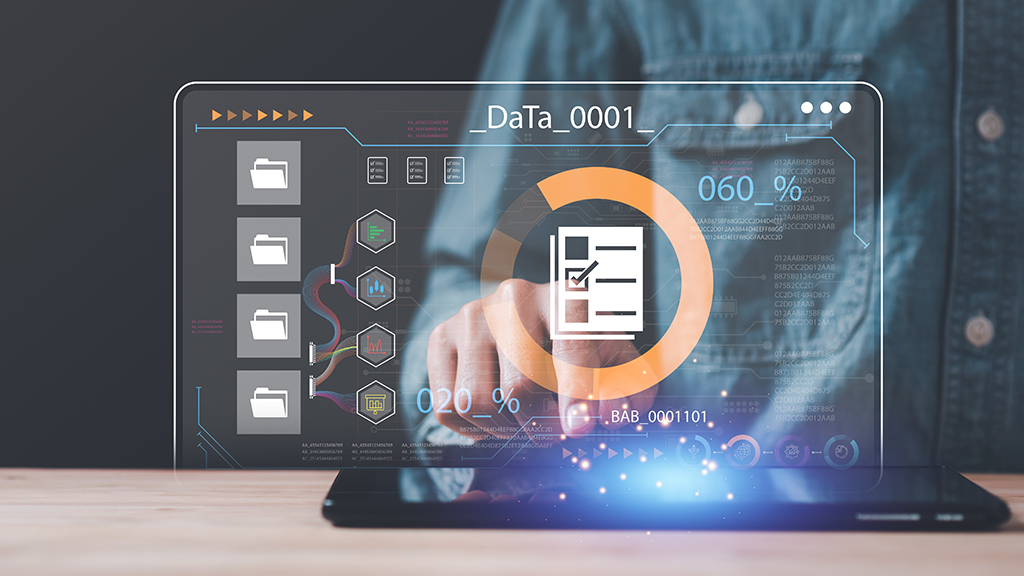
Global Content Lead - Tech & Consulting
Subscribe to the newsletter
In today’s data-driven world, making informed decisions requires a comprehensive understanding of every aspect of your business. However, the sheer volume and complexity of unstructured data can pose challenges in effectively utilizing it. This is where the significance of business intelligence tools becomes evident.
Business intelligence platforms empower non-technical users, such as business professionals, to effortlessly model, analyze, explore, and collaborate on data, unlocking meaningful insights. Among the myriad of options available, one tool stands out for its widespread adoption and impactful capabilities: Power BI by Microsoft.
Power BI has become the go-to business intelligence tool for organizations worldwide, with over 250,000 entities, including 97% of Fortune 500 companies, harnessing its power to enable data-driven decision-making and deliver tangible business value. With Power BI, everyone within an organization can tap into the potential of data and transform it into actionable insights, driving success and innovation.
Introduction to Microsoft Power BI
Microsoft Power BI is a suite of business analytics tools that enable users to analyze data, share insights, and create visually appealing reports and dashboards. It empowers organizations to connect to multiple data sources, transform and shape data, create interactive visualizations, and share the generated reports and dashboards with others seamlessly. Essentially, it provides you with a 360-degree view of your most critical business data. It is user-friendly, and one doesn’t need to be a data scientist to gain valuable insights.
What is Power BI used for?

As explained, Power BI lets you connect data sources, visualize them and help you understand what is important, letting you share this information with anyone.
Power BI can be deployed on the cloud and on-premise. It enables organizations to connect to various data sources, transform and model the data, and generate meaningful insights for better decision-making.
It provides a user-friendly interface, powerful data analytics capabilities, and seamless integration with other Microsoft products, making it a popular choice for data analysis and reporting in businesses of all sizes. Some of its key features include:
- Data connectivity: Power BI provides a vast array of data connectors, allowing users to connect to various data sources, both on-premises and in the cloud. It offers native integration with popular Microsoft services such as Azure, SQL Server, Excel, and SharePoint. Additionally, it supports connectors for other databases, cloud services, and third-party applications.
- Data transformation and modeling: Power BI offers a user-friendly interface for transforming and modeling data. With its built-in Power Query Editor, users can effortlessly clean, filter, and reshape data. In addition, advanced data modeling capabilities, including relationships, calculations, and measures, provide a robust foundation for creating insightful visualizations.
- Data visualization: With Power BI, users can craft reports and dashboards that are both visually captivating and interactive. The software provides a wide range of visualization options such as charts, graphs, maps, and tables, allowing for a more meaningful representation of data. This feature makes it simpler for stakeholders to comprehend complex data and recognize patterns or trends that may otherwise be difficult to identify.
- Natural language querying: Power BI incorporates a feature called “Q&A,” which allows users to query data using natural language. By simply typing or speaking questions in plain English, users can receive immediate answers through visualizations. This feature significantly simplifies data exploration and analysis, enabling even non-technical users to gain insights effortlessly.
- Collaboration and sharing: Power BI facilitates seamless collaboration and sharing of reports and dashboards within teams and across organizations. Users can publish their reports to the Power BI service or SharePoint Online, making them accessible to authorized individuals. Additionally, Power BI offers fine-grained control over data security and sharing permissions, ensuring that sensitive information remains protected.
- Mobile experience: Power BI extends its reach to mobile devices, enabling users to access and interact with their reports and dashboards on the go. The Power BI mobile app supports iOS and Android platforms and provides a responsive, touch-optimized experience. With real-time data updates and offline capabilities, users can stay connected and make informed decisions regardless of their location.
- AI-powered insights: Power BI leverages artificial intelligence’s power to generate meaningful insights automatically. The AI capabilities include features like automated machine learning, anomaly detection, and smart data preparation. These features help users identify hidden patterns, detect outliers, and gain valuable insights from their data more efficiently.
Who can use Power BI?

Power BI is a versatile tool that caters to a wide range of users, including businesses of all sizes. Renowned companies like Walmart, PepsiCo, Costco, Apple, and UNICEF have recognized Power BI’s value and utilized its capabilities. However, what makes Power BI particularly appealing is its accessibility to every end user, regardless of their expertise in advanced data analysis.
With Power BI, every user in your organization can generate reports and gain insights without relying on IT support. This empowers business users to independently manage their data and derive valuable information without additional dependencies. Microsoft recognizes the significance of enabling everyday business users, which is why they offer a free basic version of Power BI. This ensures businesses can leverage the tool’s features even on a limited budget.
Important professionals who can use Power BI include:
- Project managers and portfolio managers
- Business and data analysts
- Data scientists
- Consumer for end user reports
- IT professionals
What is Power BI Desktop used for?
Power BI Desktop is a free application installed on your personal computer to connect to, transform, and visualize data. Its primary function is establishing connections with various data sources, allowing you to merge them into a cohesive data model. With this consolidated data model, you can generate visuals and share them as reports with colleagues within your organization. Business users typically utilize Power BI Desktop to create reports, which can then be shared with other users through the Power BI service.
How can Power BI benefit your business?
Power BI can benefit your business in several ways. First, it lets you leverage the power of data and make informed decisions. This business intelligence tool is the right choice for businesses of all sizes looking for reporting and analytical capabilities beyond Excel. With easy data visualization and analysis, you can get deep insights into business operations and performance.
Now that it’s clear what is Microsoft Power BI used for, let’s delve into the wide-ranging benefits it offers to businesses:
Data visualization and insights
Power BI allows you to transform raw data into visually appealing and interactive reports and dashboards. This makes it easier to analyze complex data sets, identify patterns, trends, and outliers, and gain valuable insights. Visualizing data in meaningful ways helps you understand your business performance, customer behavior, market trends, and other critical factors that impact your success.
Real-time data analysis
With Power BI, you can connect to various data sources and access real-time or near-real-time data updates. This empowers you to monitor key metrics and performance indicators in real-time, enabling you to make timely decisions and respond quickly to changing market conditions or operational challenges. Real-time data analysis provides the most up-to-date information to support your decision-making processes.
Centralized data management
Power BI allows you to consolidate data from multiple sources into a centralized location. This eliminates data silos and provides a unified view of your business data. By having a single source of truth, you can ensure data consistency, accuracy, and integrity, which is crucial for making reliable and informed decisions. In addition, centralized data management streamlines data access and improves collaboration across different teams and departments.
Collaboration and sharing
Power BI facilitates collaboration and sharing of reports and dashboards within your organization. You can publish reports to the Power BI service, where authorized users can access, view, and interact with the data. This promotes transparency, data-driven discussions, and collective decision-making. Sharing reports and dashboards with stakeholders, clients, or partners outside your organization is also possible, allowing you to communicate insights effectively and align everyone around a common understanding.
Mobile Accessibility
Power BI offers dedicated mobile apps for iOS and Android devices. You can access your reports and dashboards on the go, from anywhere, using your smartphone or tablet. The mobile apps provide a responsive and touch-optimized experience, allowing you to interact with data and make informed decisions even when you are away from your desk. Mobile accessibility ensures that you stay connected and have critical insights.
Advanced analytics and AI integration
Power BI incorporates advanced analytics capabilities and integration with AI services. This enables you to leverage predictive analytics, machine learning models, and AI algorithms to gain deeper insights from your data. Applying advanced analytical techniques allows you to identify trends, forecast future outcomes, perform what-if analyses, and make data-driven predictions. These capabilities help you uncover hidden opportunities, optimize operations, and gain a competitive advantage.
Cost efficiency and scalability
Power BI offers flexible pricing options, making it accessible to businesses of all sizes. The cloud-based nature of Power BI eliminates the need for significant upfront infrastructure investments. You can start small and scale up as your business grows, or your data analysis needs become more complex. Power BI’s scalable architecture ensures it can handle large data volumes and growing analytical requirements, adapting to your evolving business needs.
Conclusion
Power BI Desktop is an all-encompassing solution enabling individuals to connect with data sources, manipulate and structure data, create dynamic reports and dashboards, generate calculations and measures, incorporate advanced analytics, and collaborate on report creation. It plays a vital role in the entire workflow of developing robust and enlightening business intelligence solutions with Power BI.
To discover further insights on how Power BI can be integrated into your business and learn more on what is Power BI useful for, reach out to our team of skilled Power BI developers. Send an email to marketing@confiz.com and connect with our experts today.



